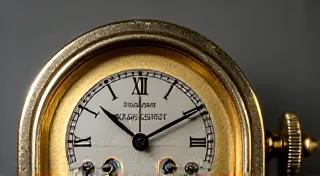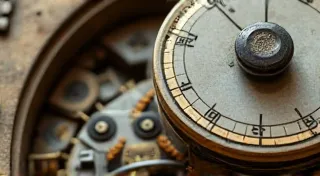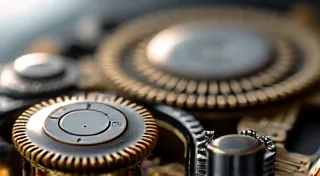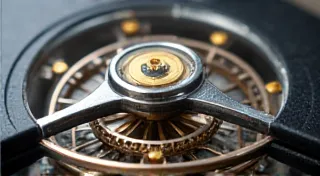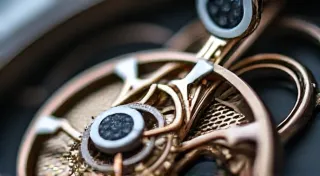The Silent Language of Bridges: Deciphering Movement Anatomy Beyond the Diagram
There’s a peculiar beauty to understanding things that operate just beyond the realm of immediate comprehension. Think of an antique accordion. It’s more than just bellows and buttons; it’s the culmination of centuries of engineering, a beautifully complex interaction of air, reeds, and the skilled hands of the maker. Each key, each valve, plays a role in a grand, resonating performance. Similarly, a mechanical watch movement, to the uninitiated, might seem like a tangle of gears and springs. But beneath the surface lies a language, a silent conversation between components that dictates the passage of time. Diagrams are vital tools, certainly – the blueprints of these miniature machines. But true understanding blooms when you move beyond rote memorization and start to *feel* the movement.
My own journey into this silent language began not with textbooks, but with a dusty pocket watch I found in my grandfather’s attic. It wasn’t a particularly valuable piece, just a humble Elgin, but the sheer intricacy of its inner workings captivated me. I remember painstakingly trying to follow the diagrams in repair manuals, attempting to connect the names – mainspring, balance wheel, pallet fork – to the tangible objects before me. It felt like trying to assemble a complex puzzle from a list of parts, without seeing the picture on the box. I learned the names, yes, but I didn’t *understand*.
The Geometry of Bridges: A Landscape of Precision
A watch movement's bridges, those precisely machined plates that hold everything in place, are often overlooked. They’re more than just structural supports; they’re integral to the movement’s performance. Observe the geometry – the angles, the thicknesses, the proximity to other components. Early, simpler movements often featured fewer bridges, relying on more exposed components and a more direct transmission of force. As technology progressed, movements became more intricate, requiring increasingly complex bridge layouts. These designs weren’s arbitrary; they were carefully considered to minimize friction, optimize vibration dampening, and provide clear pathways for the transfer of power. A watchmaker’s skill isn't just about placing bridges; it’s about understanding how they interact with each other, influencing the movement's overall efficiency.

Consider the difference between a simple lever escapement movement and a more complex co-axial escapement. The former’s bridge design reflects its straightforward operation, while the latter demands a radical rethinking of how the escapement is anchored and supported. Each screw, each jewel hole, is placed with meticulous care. The slightest deviation from the intended geometry can impact timing and accuracy. Look at the overbanking angle of the escape wheel – a small adjustment to the bridge holding the escape wheel can affect the entire escapement's performance. Many watch enthusiasts find that understanding tracing lost movements through history’s eddies can reveal the evolution of these designs and the innovative solutions employed by early watchmakers.
The Escapement: The Heartbeat of Time
The escapement is the movement's most crucial element. It’s the mechanism that translates the continuous unwinding of the mainspring into the precisely measured ticks that move the hands. The interaction between the escape wheel, pallet fork, and balance wheel is a delicate dance, a constant give and take. In early lever escapements, you can often see the visible influence of the craftsman's hand – slight imperfections in the polishing, subtle asymmetries in the pallet stones. These aren't flaws; they’re whispers of the human touch, reminders that even the most mechanically precise objects are born from human ingenuity.
Beyond the basic lever escapement, explore variations like the Rochat or the verge escapement. These earlier designs, while less efficient by modern standards, represent milestones in the evolution of timekeeping. They showcase the gradual refinement of mechanical understanding. Look at the shape of the pallet arms – are they symmetrical? Are they polished? The level of refinement speaks volumes about the watchmaker’s skill and the intended quality of the timepiece. Early escapements often involved careful adjustment of the ruby or sapphire pallet stones to optimize the release and capture of energy.
Mainspring Configuration: The Source of Power
The mainspring, the coiled spring that stores the energy that drives the entire movement, also offers insights. Its configuration – its length, its thickness, its winding strength – is a reflection of the intended power reserve. A larger mainspring allows for a longer running time, but also places greater stress on the movement’s components. Watchmakers skillfully balanced these factors, designing mainsprings that were both powerful and reliable.
Observe how the mainspring barrel is positioned within the movement. Is it centrally located, or offset? The placement affects the distribution of torque and can influence the movement’s balance. Some rare and complex movements employ double mainspring barrels to increase power reserve and smooth out torque delivery. The design choices are never arbitrary; they are the result of careful consideration and a deep understanding of mechanical principles. Many collectors find that identifying Seiko movement serial numbers can reveal valuable information about a watch's origin and production history.
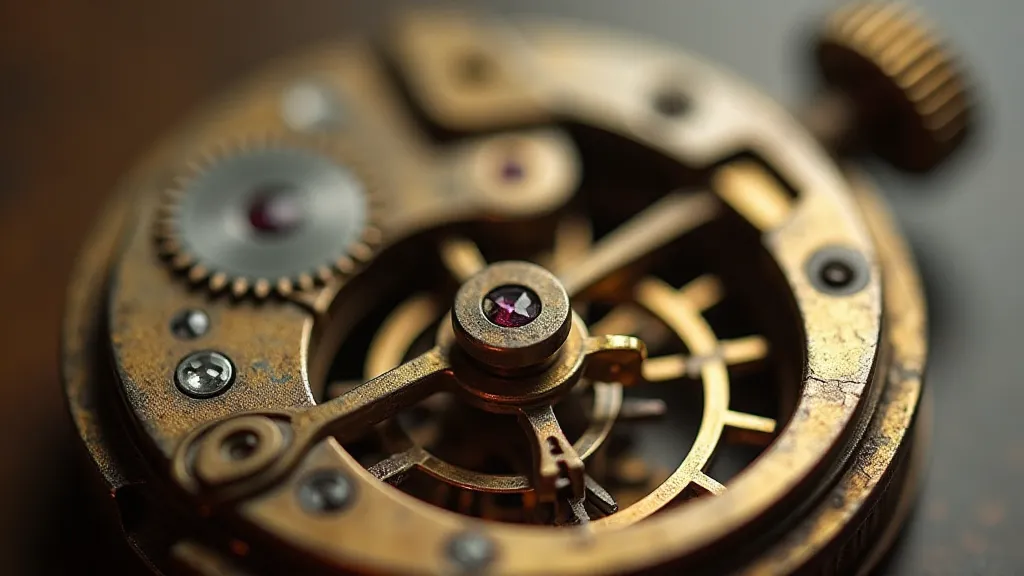
Beyond the Diagram: The Feeling of the Movement
Ultimately, deciphering the silent language of bridges isn’t about memorizing a list of parts or slavishly following diagrams. It’s about developing a visceral understanding of how these components work together. It's about feeling the rhythm of the escapement, observing the subtle dance of the gears, and appreciating the ingenuity of the design. Spend time observing a movement, not just studying it. Listen to the ticking – is it smooth and even, or erratic and uneven? Run your finger along the bridges – can you feel the precision of the machining?
Restoring vintage timepieces isn't merely a technical exercise; it’s a form of archeology, a chance to connect with the craftspeople who created these remarkable machines. Each movement tells a story – a story of innovation, perseverance, and the relentless pursuit of accuracy. As a collector, appreciating this history elevates the experience beyond mere ownership; it’s about becoming a custodian of a legacy. The real beauty of watch movements isn't just in their intricity; it’s in the human connection they represent, a testament to the enduring power of mechanical ingenuity.
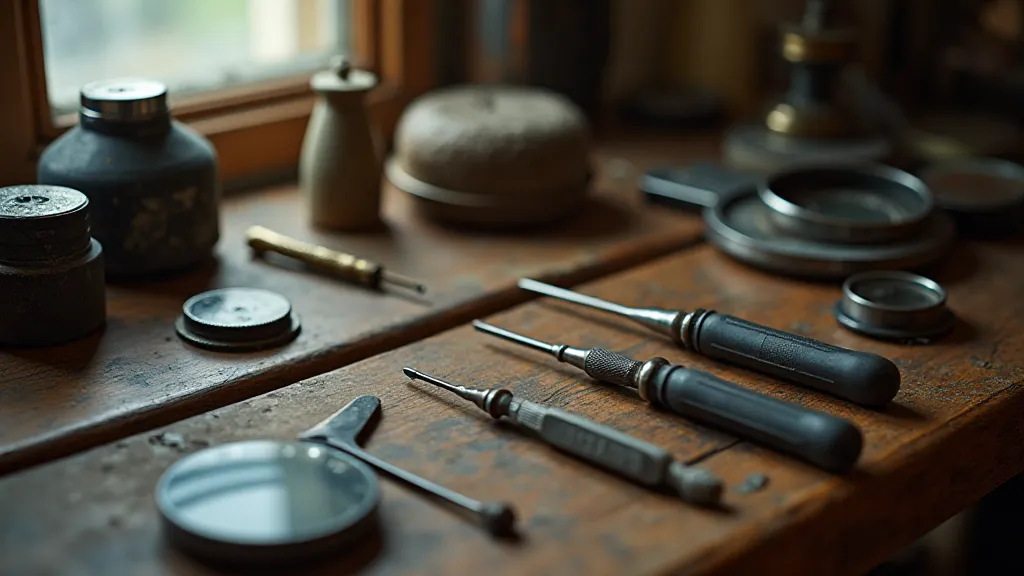
So, the next time you find yourself gazing at a mechanical watch movement, remember to look beyond the diagram. Feel the rhythm, appreciate the geometry, and listen to the silent language of the bridges. Many watch enthusiasts also find that understanding watch movement serial numbers unlocks additional insights into a movement’s origins and production history.
The world of horology is vast and complex, with countless variations on a few fundamental principles. The consistent application of precision and innovation has propelled the craft for centuries. It’s a field that rewards patience, observation, and a willingness to delve beneath the surface. Learning to diagnose problems requires careful observation and a deep understanding of the underlying mechanics. The consistent application of precision and innovation has propelled the craft for centuries.
The constant refinement of escapement designs, combined with increasingly sophisticated manufacturing techniques, has led to unprecedented levels of accuracy and reliability. The pursuit of perfection has always been a driving force in horology. The interplay of engineering and art has resulted in the creation of objects of beauty and function. The continuous push for improved performance has shaped the industry.
Consider the role of lubrication in maintaining the efficiency of a watch movement. Each component must be carefully lubricated to minimize friction and wear. The choice of lubricant is crucial, as it must be compatible with the materials of the movement and must not degrade over time. The application of lubricant is a skill in itself, requiring precision and attention to detail.
The study of vintage movements offers a unique window into the evolution of horological technology. Each movement represents a snapshot of the state of the art at the time of its creation. The analysis of these movements reveals not only the technical innovations of the era but also the aesthetic preferences of the time. The ongoing exploration of these historic movements continues to inspire modern watchmakers.
The consistent application of precision and innovation has propelled the craft for centuries. It’s a field that rewards patience, observation, and a willingness to delve beneath the surface. Learning to diagnose problems requires careful observation and a deep understanding of the underlying mechanics.
